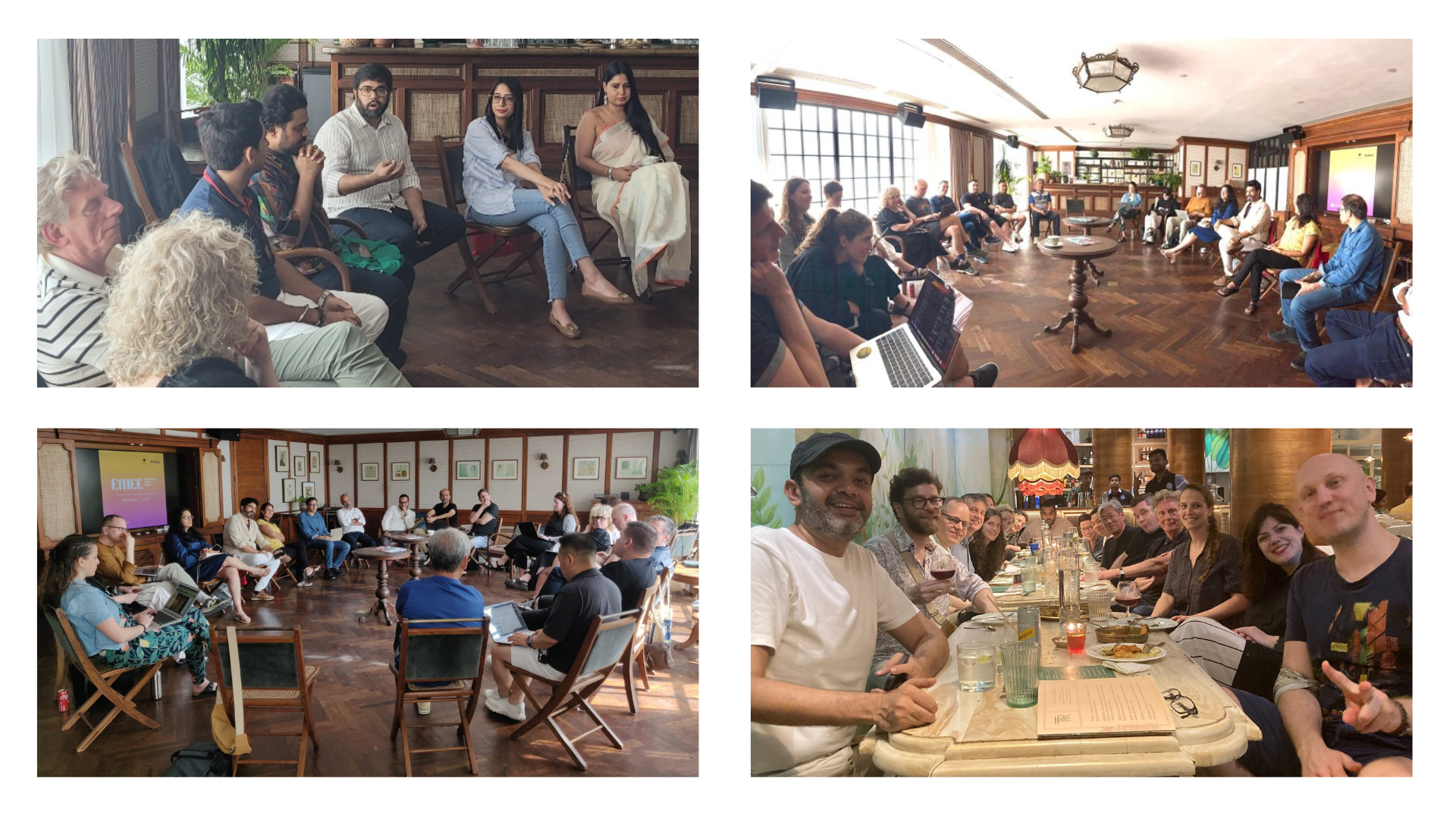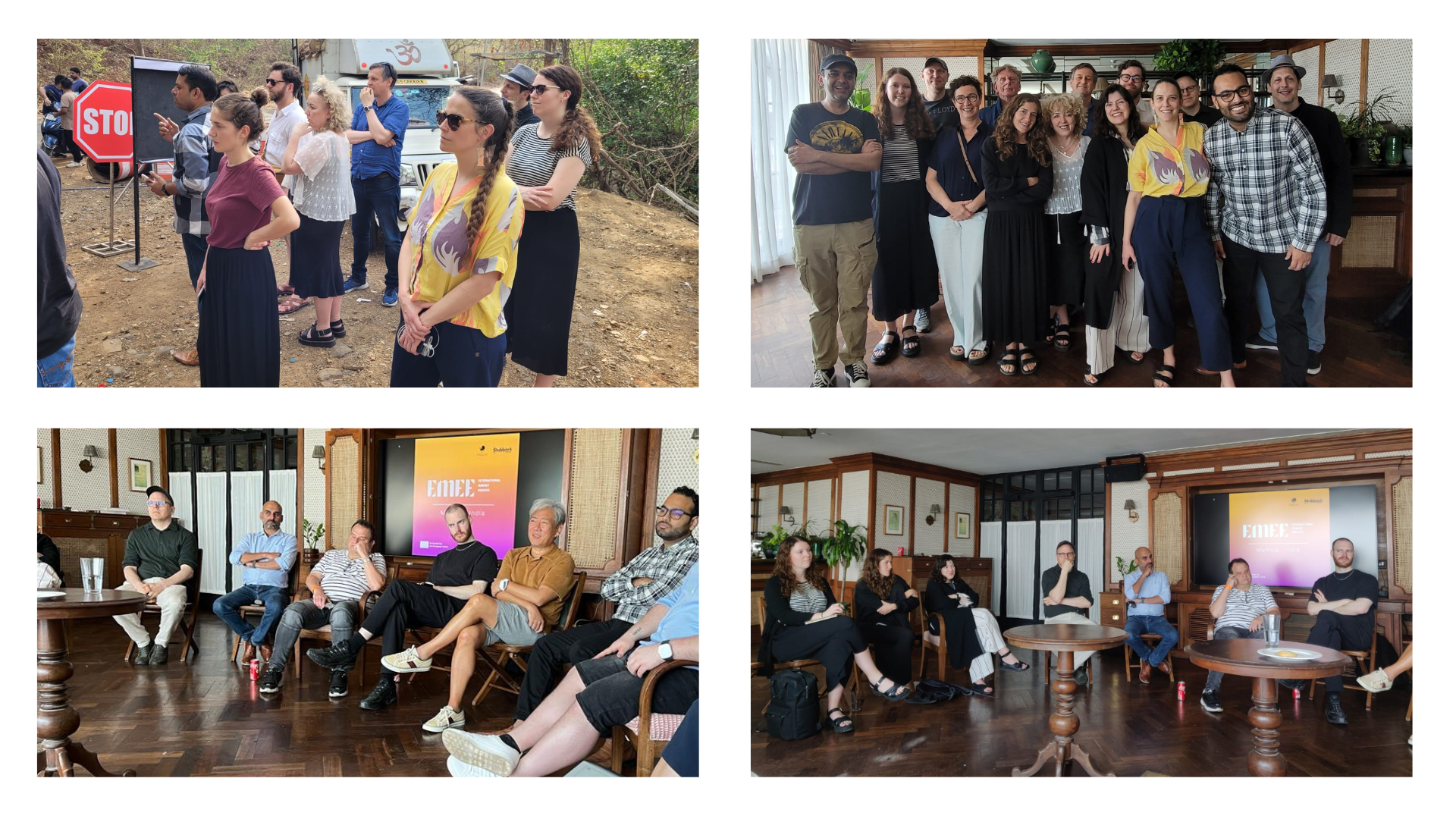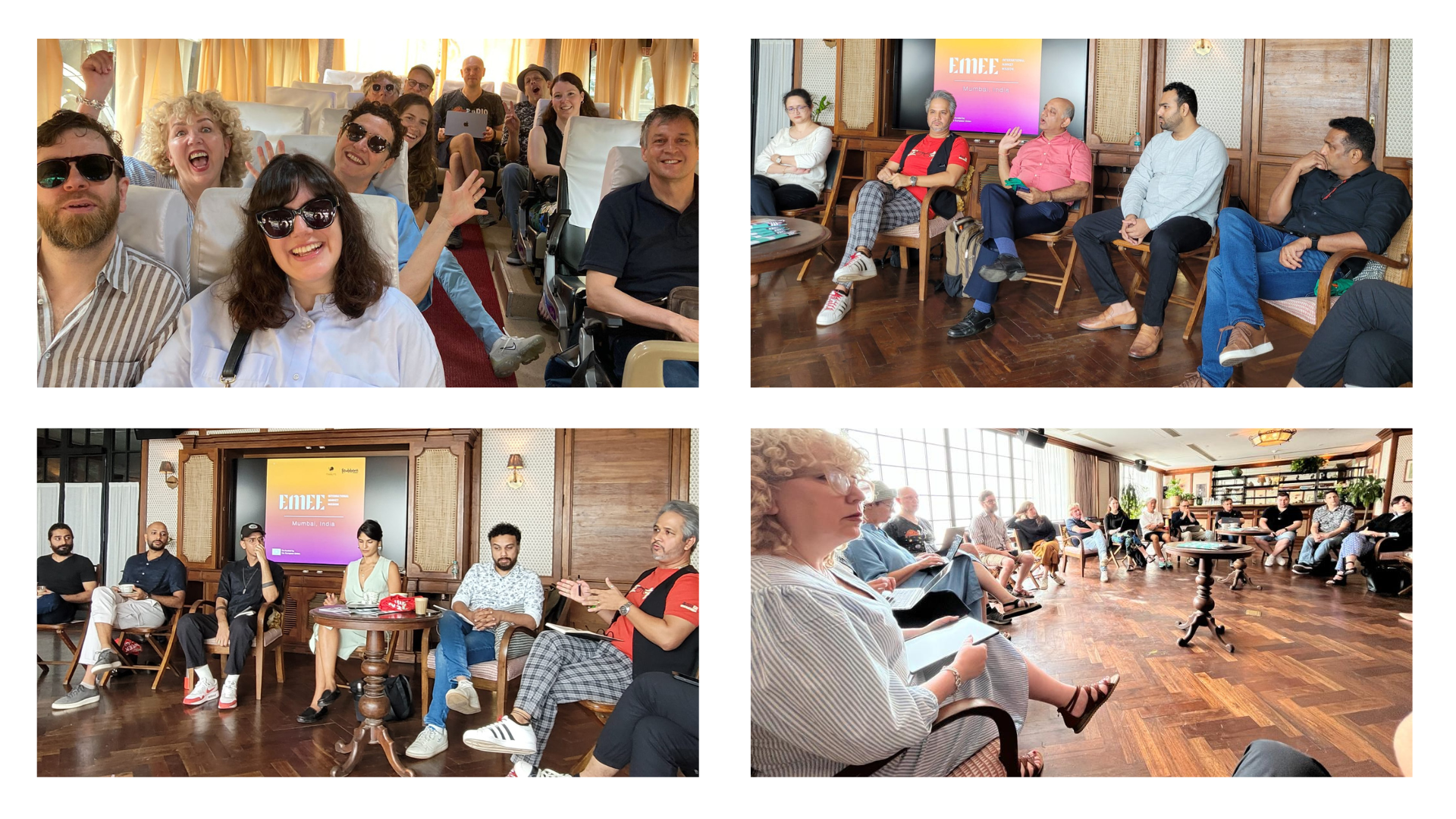EMEE International Market Mission to Mumbai, India
EMEE is leading a pan-European delegation of export offices, on an international market mission to India.
Representatives from several EU countries will meet with Indian music professionals, get insights from the local market to create links for future collaboration with European music professionals and artists. Find out more about what’s happening as EMEE President Corinne Sadki reports on the activities, companies and professionals the delegation are participating in and meeting.

Wednesday 12th April
Our location is Soho House by the sea, after 2 days of adjusting to the Mumbai atmosphere (and climate), we’re now launching into our mission: talking about the Indian music sector and meeting new people.
Panel One: Promotion and marketing
Speakers: Sushil Chhugani (Moderator), Akhila Shankar (Luminary/Consultant), Anirudh Voleti (Head of Strategy, Represent Management), Arjun Shah (Shark & Ink), Nirmika Singh (Rolling Stone), Ashish Jose (Create & Collab/All About Music)
Some Take-aways: This discussion focuses on strategies for developing artists. The panelists explain us how you can reach an audience in India; Indian people watch music so YouTube is really important, you need to tell a story visually. For the last 10 years, Indian people have been more open to new music rather than just Bollywood (Covid has accelerated this change too). Discoverability is very important; the Indian market does not think in genres but in mood! Numbers can be deceiving here: they can be big but not represent anything.
Brands (IP) are important in India, audiences will attend festivals regardless of the programming (examples include Lollapalooza ad Boiler room sessions). Curators do not exist anymore in India, the ways to reach audiences are too numerous. To enter the Indian market it will take time and strategy, it’s most important to here to engage managers – they often double up as agents, so you may need a co-management.
Panel 2: DSPs in India
Speakers: Amit Gurbaxani (Freelance Journalist), Viraj Jit Singh (Jio Entertainment), Sunny (Wynk Music), Soumini Sridhara (Artist Aloud/Hungama), Ritnika Nayan (Music Gets Me High)
Some Take-aways: Firstly we learn that 15 to 20% of the streams on music streaming platforms in India is international. This represents a small market share but relative to the population, it is a huge amount of listeners! Streaming only really started in India 5 years ago (in 2015 Apple arrived on the market). The importance of visual music (short videos, studio and backstage shots etc) is emphasised again. Coke studio created a platform for artists to collaborate on video and music content. Streaming revenues are quite low as it costs the equivalent of 1.30 euros a month for the subscription fee on DSP’s. It is more a volume game than the revenue per subscription. Tik tok is banned in India. Very quickly 200 millions people adopted the platform but was banned in 2020 with other native platforms replacing it. IPRS is the local collecting society in India, neighbouring rights do not include digital sources, meaning this revenue has to go through the labels.
Key Words of the Day
> Mood songs (and ‘sad love’ is the biggest mood in India)
> Visual music
> Short content video
> Hook steps
Thursday 13th April
After a mixer with key Indian music industry professionals in a hidden club somewhere in a very crowded area in Mumbai (Bonobo club), we were then invited to attended shows from local artists Pali Bhavan and Joshi House. We’re starting to get used to the wonderful food and the climate, and now we’re ready for the second day.
Panel One: Publishing
Speakers: Rafael Pereira (TINNUTS), Atul Churamani (Turnkey Publishing), Dinraj Shetty (Sony Music Publishing), Priti Deshpande (Universal Music), Ram Prasad Sundar (Netflix), Girish ‘Bobby’ Talwar (Rebel Lion Management)
Some Takeaways: Thanks to IPRS, the international rights are getting back to the owners, however the biggest DSPs do not have licence with the IPRS at the moment. There is a huge move in India to licence all DSPs, all radios and TVs which will mean the amount of money collected will grow hugely! The notion of song writing here is blurry, because of the Bollywood history and A&R here refers to artist relations, they don’t refer at all repertoire thing. There is a lot of capacity building for music professionals needed in India as the “non Bollywood” music is very new, and there’s a lot of key music business areas to be learned by many professionals, especially in order to embark on international deals that can be understand on both sides. Branding in India is not at all perceived as in many European countries, as it’s not connected to the value sharing, so for Indian artists and companies there isn’t a problem with working with brands, it’s just seen as money support and opportunity for exposure.
Panel two: The live industry
After a great veggie Indian meal, with an additional hint of Swiss ovomaltine chocolate (thanks Jean!), we’re all ears for our new Indian speakers, from the live sector.
Speakers: Sitara Chowfla (Festivals From India), Varun Khare (Paytm Insider), Nevil Timbadia (Bonobo, Tapped Festival), Arman Menzies (Nodwin Live), Tanish Thakkar (Gatecrash)
Some Takeaways: Here we learn again that there is, for the last 10 years, a growing market for indie music (as opposed to Bollywood) with audiences being open to all kinds of music. No surprise, before being known, an artist often needs to come over several times to build their audience. For niche genres, PR does not really work as there is no real music media (apart from Rolling Stone India), it’s mainly focused on social media stories (blogs, Instagram … ). Following the session we visited one of the 2 clubs of Mumbai, AntiSocial (with the Bonobo visited the night before) for a gig.
Key Words of the Day
> Brand Everywhere
> Talk with an Indian lawyer for your rights
> Last two years has shown a curiosity for many genres of music
> Clubs are the same cool places everywhere

Friday 14th April
Feeling a little less energetic today after a night out, but we are all ears for the last panel: Collaborations.
Speakers: Riad Saha (Hindustan Recs/INRECO), Abhishek Patil (Warner Music), Yuri (DJ Monitor), Henrik Tala (Songs Asia), Tony Oh (Jam Factory), Jani Joenniemi (Outpost Social/EARS)
Some Takeaways: With a moderation from our facilitator Rafael, we discussed ways of collaboration, and how to get some impact data with DJ monitor’s tool. We spend some time exploring artistic collaboration, with the story of Tagore, revisited by European Philharmonic orchestras or beatmakers and looking at the initiative of SongsAsia, through the songwriters from different countries and continents, and now with Bollywood.
In terms of collaborating with Indian professionals, it’s clear a follow up communication is crucial: define the next steps for you and them, the options available and ask the questions. Informal communication channels (e.g. WhatApp) are mostly used, emails are seen as very formal.
Here ends our discovery and understanding of the Indian music market. The rest of the day will be spent visiting Bollywood studios and watching more music before each of us goes back to their home country.

